With our original plans for our trip to Central Otago somewhat changed, we decided to continue on our tours of mining areas and made plans to visit the Bannockburn Sluicings. We drove through lush vineyards before climbing towards a plateau alongside the Kawarau River. As we left the car park and made our way to the start of the track, we found ourselves in quite an unusual landscape. The dry cliffs and scrub brush reminded us of the Western Slope of Colorado rather than somewhere in New Zealand.
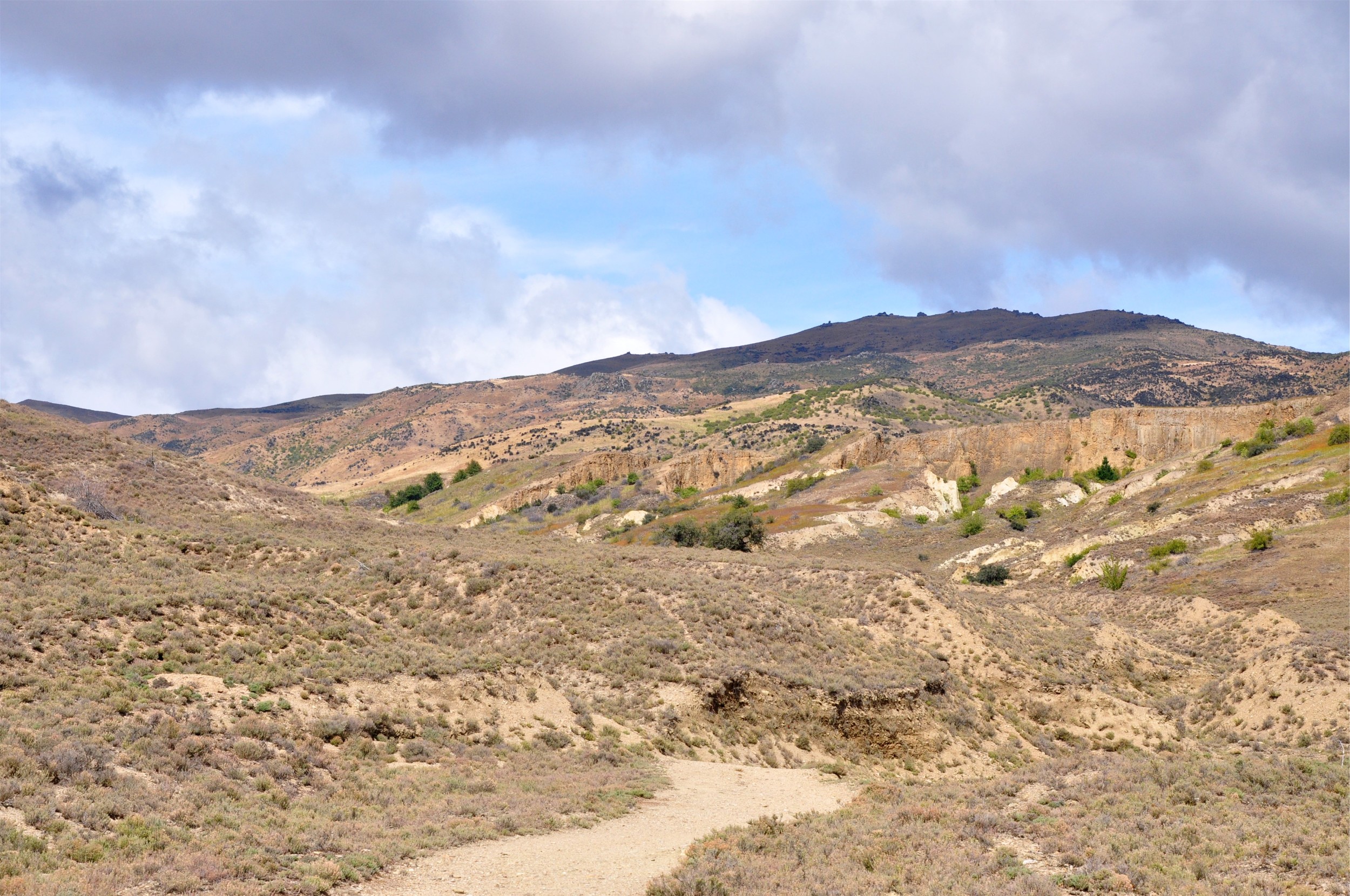
Unlike the mining we had seen the previous day near Alexandra, here the gold was extracted through a series of sluices. Thanks to a dam that was built on the hillside above the gold workings, miners were able to use both ground sluicing and hydraulic sluicing to wash away the gravels allowing them to channel the pay dirt into troughs for processing.
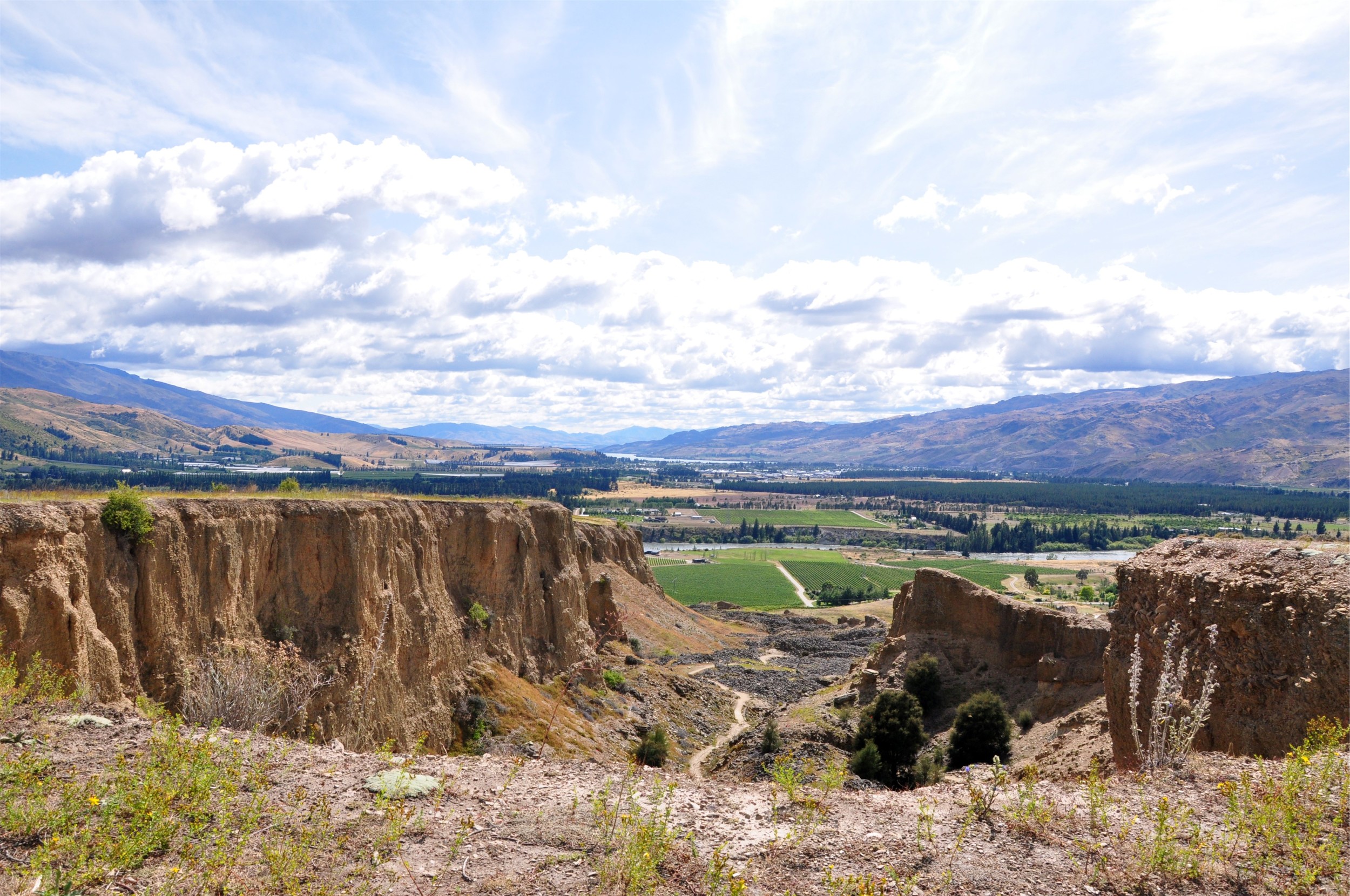
We walked up through one of the gullies to the terrace above and were able to see where miners had channeled the water, using gravity to wash away the soils. From this vantage point we were able to look down the Dunstan Valley at some of the vineyards that make the famous Otago Pinot Noir.
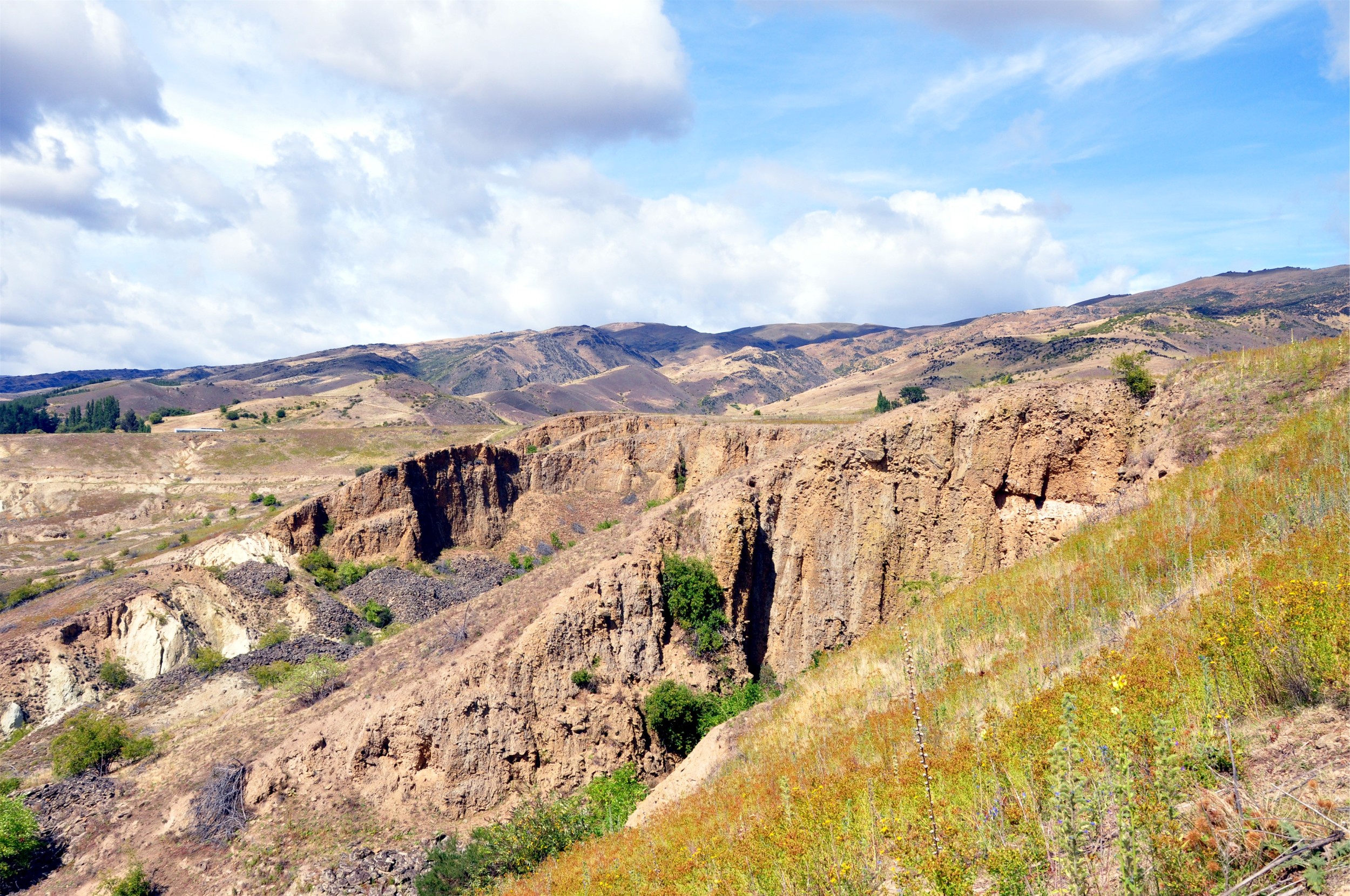
In sharp contrast to the vineyards below us, the track took us through yet more gullies that had been formed by the miners that worked this area 150 years ago.
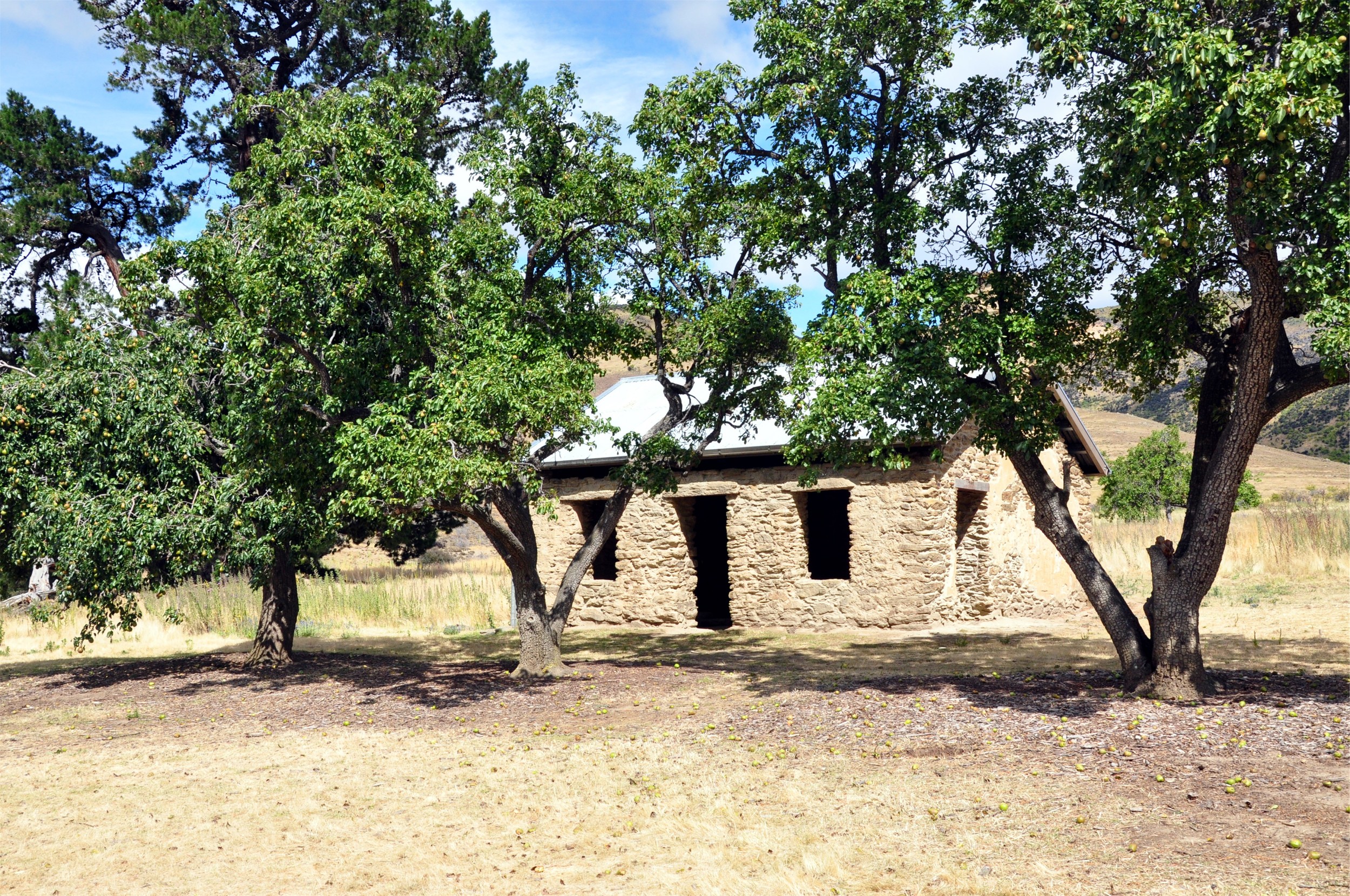
Perched high on a terrace above the sluicings were the remains of Menzies Dam, complete with hand-built clay and rock walls to contain the water. John Menzies and David Stewart purchased the water rights in this area and then sold water to the other miners in the area for 4 pounds a week for a ‘head’ of water (around 28.3 litres), given that gold was being sold at just over 3 pounds an ounce, this was a significant investment. Some of the buildings in Stewart Town have been restored and sit among the original fruit orchards. The apricot trees were planted in 1906 and had perfectly ripe fruit on them, we enjoyed a couple of sun-warmed apricots before continuing on the track around the sluicings.
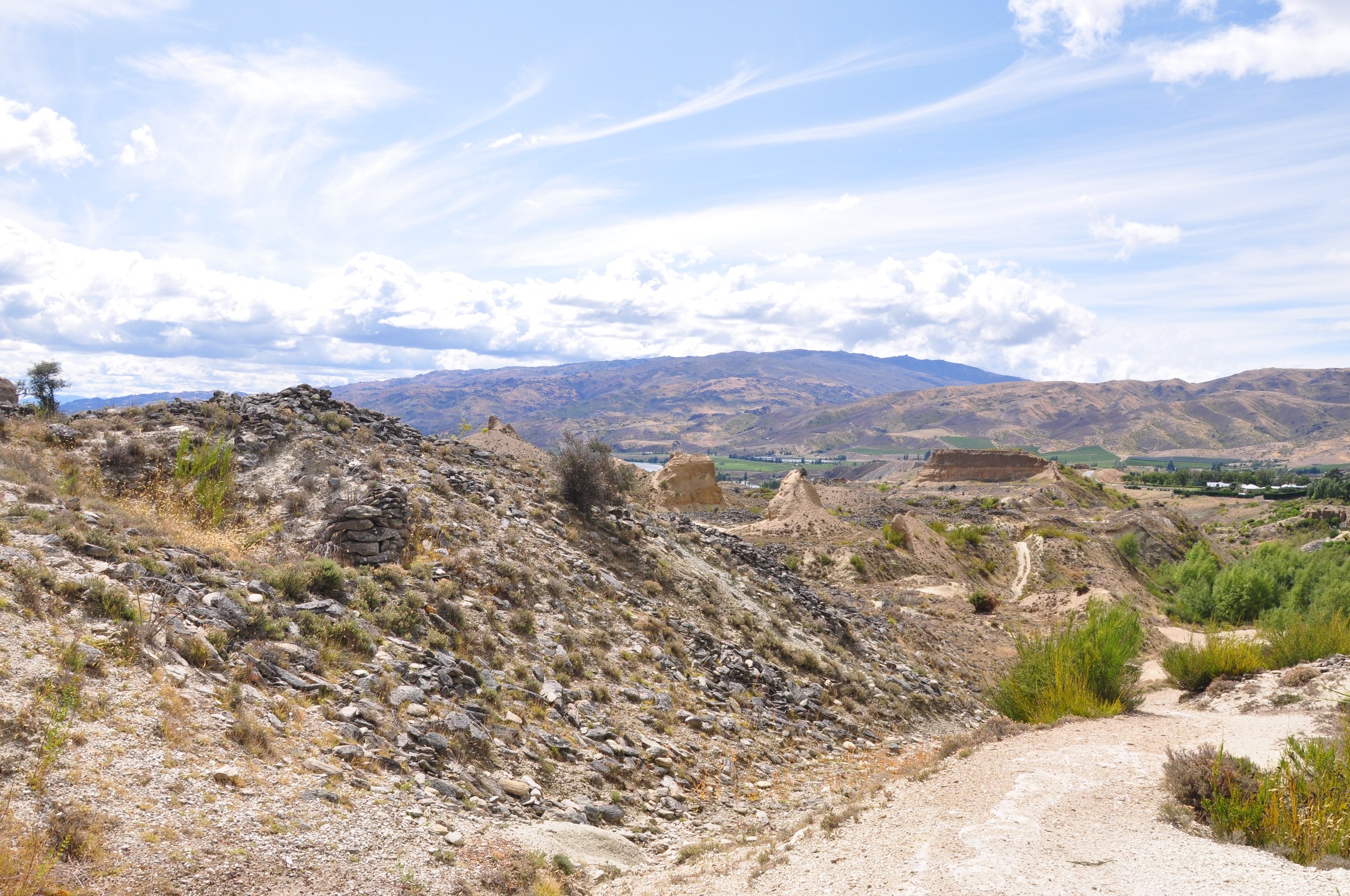
Remnants of the water races that transported the water through the mining claims were scattered around the area. In the distance we could see towering pinnacles that gave an indication of how much material had been removed from the hillside. These remaining rock spires contained the pegs that marked the corners of the mining claims and so were left in order to ensure that there were no disputes as to the boundaries.

Eventually the track took us out of the main mining area and through areas that had started to regenerate, the low-growing wild thyme plants smelt great under foot as we headed back down the hill towards the car park.
